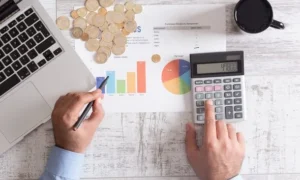In an economy increasingly defined by data, one profession has emerged as a critical force for resilience, inclusion, and sustainable growth: credit and risk analysts. While they often work behind the scenes, their role is central to the financial infrastructure that powers both Wall Street and Main Street. These professionals are not just gatekeepers of capital—they are architects of opportunity.
By blending advanced STEM skills with financial acumen, credit and risk analysts help direct billions in capital, assess systemic vulnerabilities, and promote inclusive economic development—especially in historically underserved communities.
A Profession Rooted in STEM and Driven by Impact
Credit and risk analysis lies at the intersection of science, finance, and public policy. It’s a data-intensive field that relies heavily on STEM disciplines:
- Quantitative Modeling: Leveraging probability theory and machine learning to forecast credit behavior.
- Programming & Automation: Using Python, R, SQL, and VBA to build scalable financial models.
- Engineering Logic: Creating systems for fraud detection, default prediction, and scenario testing.
- Big Data Analytics: Analyzing vast datasets to uncover credit risk trends and lending gaps.
According to the U.S. Bureau of Labor Statistics, employment for financial analysts—including credit and risk analysts—is projected to grow by 8% from 2022 to 2032, faster than the average for all occupations.¹ This growth reflects rising demand for data-driven decision-making across all financial sectors
Strengthening the U.S. Economy, One Risk Assessment at a Time
From regulating major banks to financing small businesses, credit and risk analysts play a vital role in the economic engine. They help:
- Safeguard Financial Systems: Identifying weaknesses that could trigger widespread defaults or market crashes.
- Protect Investors: Through transparent credit ratings and structured risk modeling.
- Drive Smart Lending: Accurately pricing risk to extend fair and responsible access to capital.
- Ensure Compliance: Helping financial institutions meet standards under regulatory frameworks like Basel III and Dodd-Frank.²
Their evaluations directly influence interest rates, loan availability, investment decisions, and systemic risk management.
Expanding Opportunity in Underserved Communities
Credit and risk analysts are increasingly instrumental in reshaping how underserved communities access capital. Their work supports:
- Financial Inclusion: Using alternative data (e.g., rental or utility payment history) to evaluate creditworthiness where traditional data is lacking.³
- Community Investment: Collaborating with Community Development Financial Institutions (CDFIs) to fund housing, local businesses, and essential infrastructure.
- Entrepreneurship: Equipping minority-owned businesses with fair, data-backed access to capital.
- Economic Uplift: Enabling local job creation through better-structured lending and microfinance models.
A report by McKinsey & Company highlights that improving access to credit for minority-owned small businesses could add $280 billion in annual income to the U.S. economy.⁴
A Pathway to Job Creation and National Prosperity
The profession offers a promising future for STEM-literate individuals:
- High-Earning Potential: Median salaries for credit analysts exceed $77,000, with experienced professionals in major markets earning well over $120,000.⁵
- Workforce Diversification: Initiatives like the Federal Reserve’s Pathways to the Financial Sector aim to expand training for underrepresented groups.
- STEM and Finance Fusion: Programs combining data science with financial theory (e.g., CFA-FDP, FinTech bootcamps) are producing the next generation of hybrid-skilled analysts.
In short, the credit and risk analysis field offers a robust, future-proof career path that contributes directly to national economic well-being.
Conclusion: A Profession of Strategic National Importance
Credit and risk analysts are more than number crunchers—they are economic sentinels. They ensure financial stability, empower innovation, and democratize access to capital. Their work affects everything from individual credit scores to international bond markets.
As the U.S. navigates a landscape marked by economic uncertainty, rising inequality, and rapid digital transformation, the nation must invest in this profession. Training, equipping, and expanding the reach of credit and risk analysts may be one of the most impactful economic strategies of our time.
References
1. U.S. Bureau of Labor Statistics. (2023). Occupational Outlook Handbook – Financial Analysts. https://www.bls.gov/ooh
2. Basel Committee on Banking Supervision. (2017). Basel III: Finalising post-crisis reforms. Bank for International Settlements.
Dodd-Frank Act. U.S. Government Publishing Office. https://www.govinfo.gov
3. Consumer Financial Protection Bureau. (2022). Data Point: Credit Invisibles. https://www.consumerfinance.gov
4. McKinsey & Company. (2020). The Economic Impact of Closing the Racial Wealth Gap. https://www.mckinsey.com



































